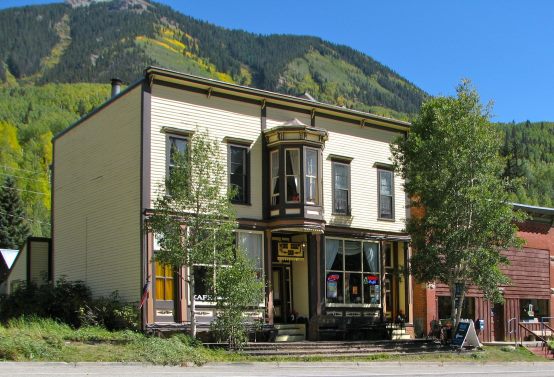The Boarding Houses that Built America

During America’s century-long ascent from sleepy colonial backwater to great industrial giant, the urbanization of the country was funneled through a consistent apparatus: the boarding house.
As Alexis de Tocqueville stepped off his boat onto Manhattan Island in 1831, he made his first stop a boarding house on Wall Street, where he found even New York’s governor would take up residence alongside men of considerably lesser influence. America’s democratic character immediately impressed itself upon him, as the French aristocrat marveled at the American, a person “constantly in agitation, as he was continually changing his abode.” A decade later, Walt Whitman would declare Americans to be “a boarding people.”
At one point, as many as half of all urban Americans would have either boarded themselves or taken boarders into their own homes. For citizens of an agrarian republic moving into the new urban landscape, the boarding house provided an intermediate step of community. Shared meals and common areas facilitated the feeling of home in a large family, and proprietors often were charged with maintaining a certain standard of morality for those coming under their care (though, as Ruth Graham noted, “with varied levels of success”).
The population density also allowed nearby businesses to flourish, as people poured out of their buildings and used the sidewalks and adjacent bars and services, all easily within walking distance. Professor Paul Groth, a scholar of the boarding house, found that “the surrounding sidewalks and stores functioned as parts of each resident’s home.” Such constant jostling with those who lived nearby contrasts sharply with today’s civic environment, as a third of Americans currently report that they have never interacted with their neighbors.
The boarding house, and a series of complementary institutions like the Single Resident Occupancy (SRO) temporary hotel, carried Jacksonian America into the Age of Wilson. Ruth Graham recalls that Louisa May Alcott’s 1860s novel Little Women revolves centrally around a young woman’s escape from home into Bostonian boarding house life.
Eventually the (as ever, ostensibly well-meaning) regulatory grip descended onto the boarding house and SRO. Once zoning was ruled to be constitutional in the 1920s, planners stopped the well-heeled housing form in its tracks, instead creating new residential areas that were kept free of the poor and working class who might seek more temporary lodgings.
After World War II, further escalations in regulation combined with the great centrifugal force of suburbanization, as returning GI’s sought to settle the crabgrass frontier with every household in charge of its own single-family manor. Its extraordinary wealth (and concurrent devastation of the rest of the world) allowed America to rent the illusion of universal aristocracy for a time, under the impression that the towns were paid for and could easily be passed down.
Now that the bills for upkeep are coming due, many residential towns are finding that they lack the resources to maintain their structure for more than a generation or two.
Cities, meanwhile, are finding the young flooding back, especially in a few hotly-desired metro areas. The accumulated restrictions of the affordable housing-hostile, however, have precluded the sorts of structures that once existed to take them in. And the received ideal of independence has shunted young people into automatically seeking at best an apartment, what Ruth Graham described as “effectively its own miniature house, complete with kitchen, bathroom, bedroom, and living room,” one stacked upon the other in appropriate, self-sufficient isolation.
“Co-living spaces” are cropping up to serve the Internet anomie of the young and fashionably located (“I’m surrounded by people and things to do, and yet I’m so f—ing bored and lonely,” as The New Yorker relates), but their structures and lessons should not be restricted to the yuppie.
Cities should move to relax their rules against boarding and SROs, so that the transient might again have grounding stepping stones, and the insolvent might once more be able to obtain footholds. Vancouver’s Downtown Eastside neighborhood was once, not coincidentally, home to both the lowest homeless population and highest SRO concentration in the area.
Structures that served so well Hawthorne and his companions should not be barred to America’s current generation.
Jonathan Coppage is senior staff editor at The American Conservative. “New Urbs” is supported by a grant from the Richard H. Driehaus Foundation. Follow New Urbs on Twitter for a feed dedicated to TAC’s coverage of cities, urbanism, and place.
Comments